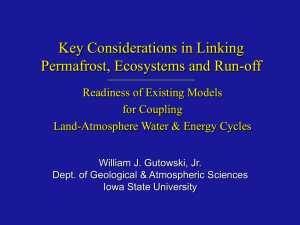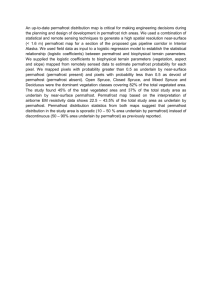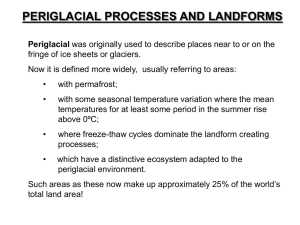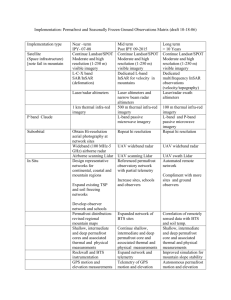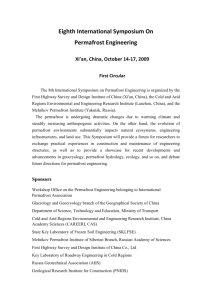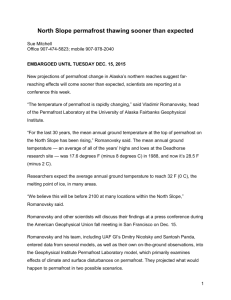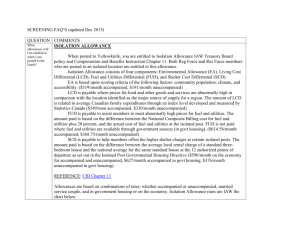Northern Climate Change – Where We Are and What We Can Do
advertisement
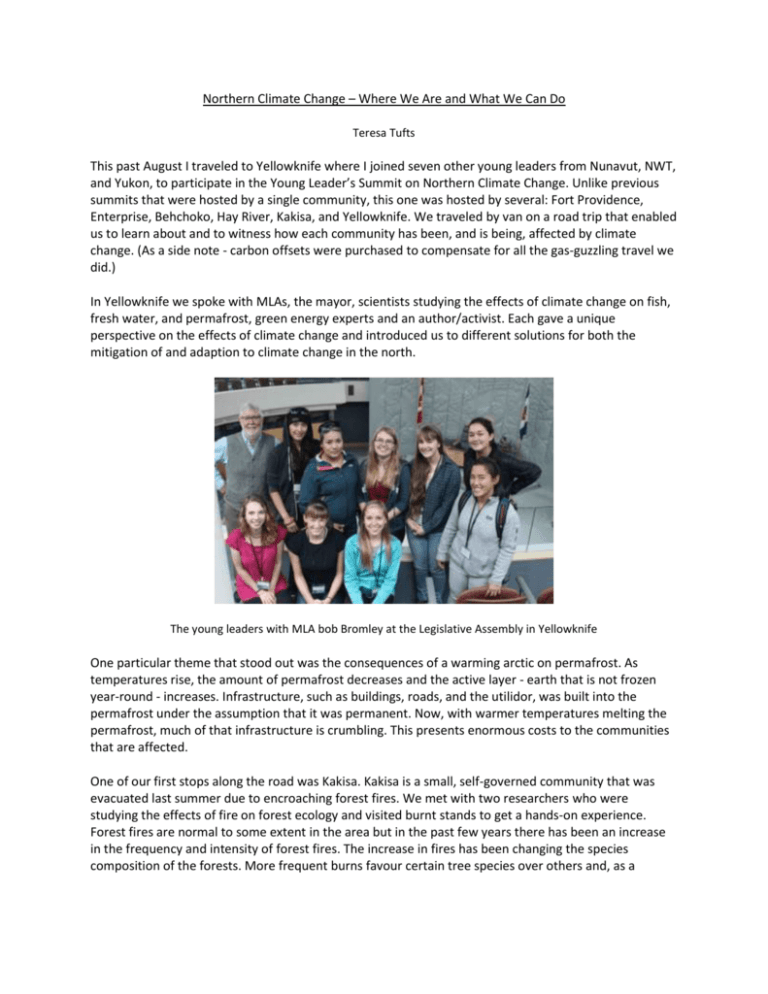
Northern Climate Change – Where We Are and What We Can Do Teresa Tufts This past August I traveled to Yellowknife where I joined seven other young leaders from Nunavut, NWT, and Yukon, to participate in the Young Leader’s Summit on Northern Climate Change. Unlike previous summits that were hosted by a single community, this one was hosted by several: Fort Providence, Enterprise, Behchoko, Hay River, Kakisa, and Yellowknife. We traveled by van on a road trip that enabled us to learn about and to witness how each community has been, and is being, affected by climate change. (As a side note - carbon offsets were purchased to compensate for all the gas-guzzling travel we did.) In Yellowknife we spoke with MLAs, the mayor, scientists studying the effects of climate change on fish, fresh water, and permafrost, green energy experts and an author/activist. Each gave a unique perspective on the effects of climate change and introduced us to different solutions for both the mitigation of and adaption to climate change in the north. The young leaders with MLA bob Bromley at the Legislative Assembly in Yellowknife One particular theme that stood out was the consequences of a warming arctic on permafrost. As temperatures rise, the amount of permafrost decreases and the active layer - earth that is not frozen year-round - increases. Infrastructure, such as buildings, roads, and the utilidor, was built into the permafrost under the assumption that it was permanent. Now, with warmer temperatures melting the permafrost, much of that infrastructure is crumbling. This presents enormous costs to the communities that are affected. One of our first stops along the road was Kakisa. Kakisa is a small, self-governed community that was evacuated last summer due to encroaching forest fires. We met with two researchers who were studying the effects of fire on forest ecology and visited burnt stands to get a hands-on experience. Forest fires are normal to some extent in the area but in the past few years there has been an increase in the frequency and intensity of forest fires. The increase in fires has been changing the species composition of the forests. More frequent burns favour certain tree species over others and, as a consequence, cascades to a change in the flora and fauna that inhabit the forest, completely changing the forest dynamics. A major highlight of the summit was visiting the Northern Farm Training Institute (NFTI) campus and farm. The school offers northerners education about food production and provides the practical experience needed to develop gardens and/or farms in their home communities. Although this seems unrealistic for the tundra you’d be surprised that gardening and farming is totally possible in Nunavut! The practices they teach are holistic and sustainable. Imagine growing your own food while at the same time improving the environment - how exciting! If interested in making a difference in Nunavut by moving towards better food security and sustainability, I encourage you to check out their website: http://www.nftinwt.com/ In Hay River three of us interviewed two elders about their experiences with climate change. They have observed changes in wildlife – there are more cougars and coyotes but less caribou in the area. The elders also indicated that are fewer fish in the lakes in rivers due to low water levels – a pattern observed all across the north. One significant consequence of species turnover, aside from the ecological effects, is the loss of cultural practices. For example, fewer caribou mean that fewer youth are able to learn the hunting, skinning, cooking, and sewing techniques used for generations by their ancestors. Another change they’ve witnessed is the increase in fires. The increase is causing foxes and bears to venture into the communities for food, creating a more hostile relationship between humans and these animals. Participants visiting a community garden in Hay River There is no question that climate change disproportionately impacts the Arctic, both ecologically and culturally. Average temperatures are on the rise, weather patterns are out of synch, the permafrost is melting, the sea ice is changing, and the abundance and distribution of species is altered. For communities and cultures that have relied on the land for centuries, these vast and rapid changes threaten to diminish traditional lifestyles. The message from past summits has been that the world needs to take action because the north is so vulnerable and so disproportionately affected by climate change. We, the youth leaders from the 2015 summit, believe that the north has an equally important role in reducing greenhouse gas emissions and our impact on the planet. Our energy needs, especially for heating and transportation, are enormous. In Nunavut all of our communities rely on diesel generators for electricity and diesel for transporting supplies and people. There are renewable, green alternatives that should be explored such as wind, hydro and biomass. We live in one of the few remaining pristine environments and we have the responsibility to take care of it. Now is the time for territorial governments to take a leadership role in responding to climate change. Now is the time to take action and set an example for the rest of Canada and for the world. After all, eyes are on the North. I call on all individuals, families, educational institutions, organizations, companies, governments, and leaders alike: practice responsible citizenship. Be educated on the issue of climate change; participate in making your homes, workplaces, and communities more sustainable and environmentally friendly; be the agents of change, leaders and role models that make real differences, no matter how big or small. Finally, a big thanks to Ecology North and the Pembina Institute for hosting the summit and providing the opportunity to connect with some incredible leaders from across Canada’s North. Thanks also to the many sponsors of the summit, particularly the GN Department of Environment, that made it all possible.




